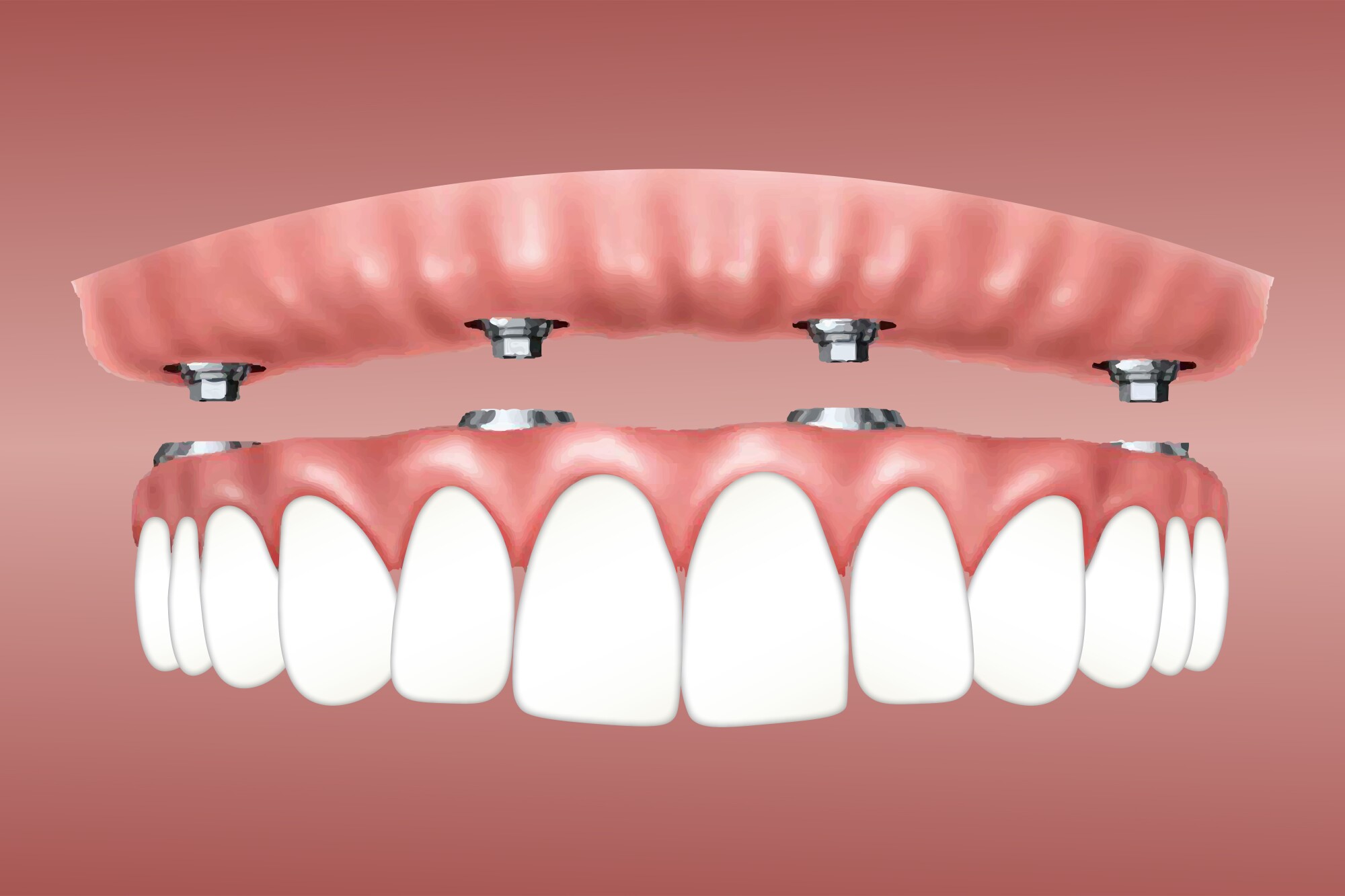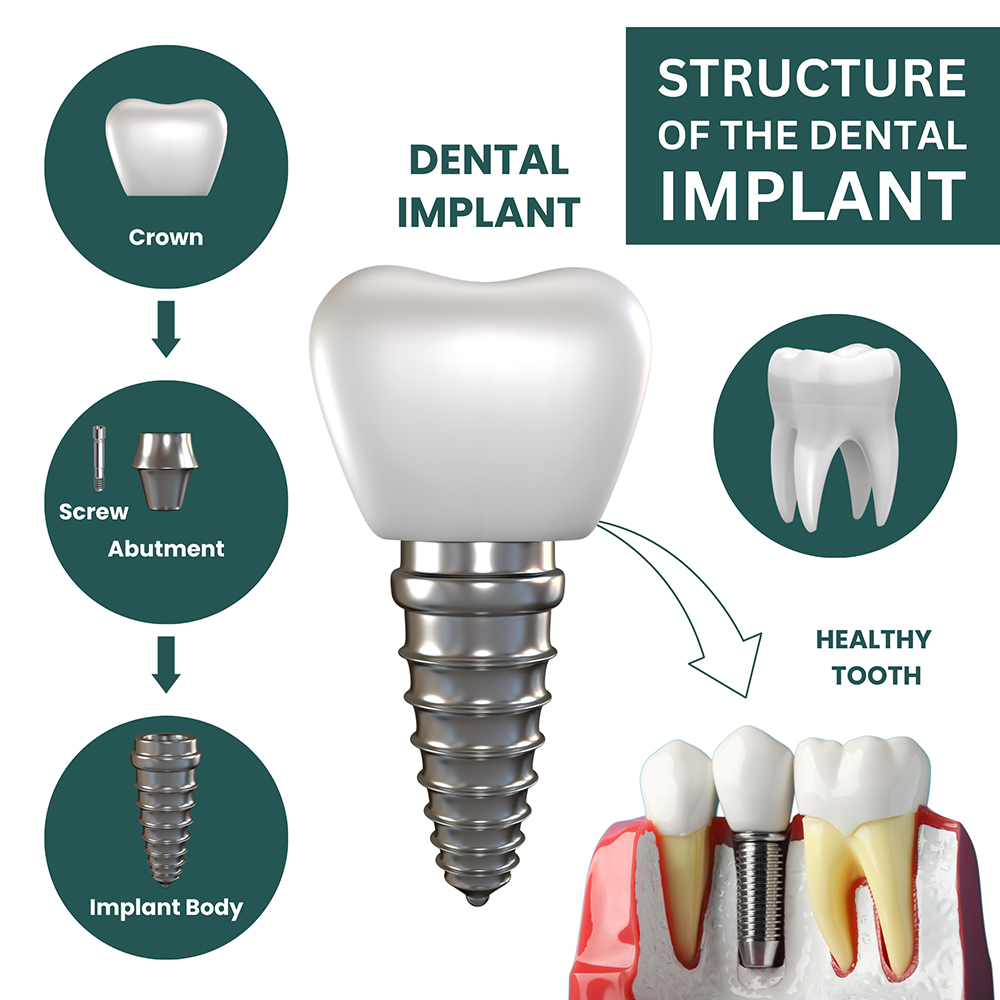The Best Guide To Dental Sense
The smart Trick of Dental Sense That Nobody is Talking About
Table of ContentsFacts About Dental Sense Uncovered7 Simple Techniques For Dental Sense6 Simple Techniques For Dental SenseThe 20-Second Trick For Dental Sense
are clinical gadgets operatively implanted right into the jaw to restore an individual's capability to eat or their look. They supply support for man-made (phony) teeth, such as crowns, bridges, or dentures. When a tooth is shed due to injury or illness, an individual can experience complications such as quick bone loss, defective speech, or changes to chewing patterns that lead to pain.Dental implant systems contain a dental implant body and dental implant joint and may likewise consist of a joint fixation screw. Dental veneers cost. The dental implant body is operatively put in the jawbone in area of the tooth's origin. The dental implant joint is typically affixed to the dental implant body by the abutment addiction screw and prolongs via periodontals right into the mouth to support the connected artificial teeth
(https://dental-sense.jimdosite.com/)Structure of The Dental Implant System picking oral implants, talk with your oral supplier regarding the prospective benefits and threats, and whether you are a prospect for the treatment. Things to consider: Your general health is a crucial factor in figuring out whether you are a good prospect for dental implants, for how long it will certainly take to heal, and for how long the implant might remain in place.
Cigarette smoking might impact the recovery procedure and lower the long-lasting success of the dental implant. The healing procedure for the implant body might take numerous months or longer, throughout which time you typically have a temporary abutment instead of the tooth. the oral implant procedure: Very carefully adhere to the oral hygiene directions provided to you by your oral company.
The Facts About Dental Sense Uncovered
Implant failing can cause the requirement for another operation to repair or replace the implant system. Brings back the ability to eat Brings back aesthetic look Helps keep the jawbone from diminishing because of bone loss Maintains the health and wellness of the surrounding bone and periodontals Assists keep nearby (neighboring) teeth secure Boosts lifestyle Damages to surrounding natural teeth throughout implant positioning Injury to the surrounding tissues during surgical procedure, such as sinus opening Injury throughout surgery (as an example, crack of bordering jawbone) Inadequate feature, such as seeming like the teeth do not bite with each other typically An experience that the tooth is loose or twisting in place resulting from an abutment screw loosening Implant body failing (looseness of the dental implant body) because of systemic infection, which might be more probable in individuals with unchecked diabetes due to local infection in bone and periodontals supporting the implant body due to postponed recovery, which may be more probable in people who smoke Trouble cleansing the periodontals around the dental implant, leading to bad dental hygiene Neglected gum illness Post-surgical pins and needles because of nerve impingement or damages Always alert healthcare companies and imaging professionals that you have oral implants prior to any magnetic resonance imaging (MRI) or x-ray treatments.
FDA is not conscious of any type of negative occasions reported for MRI or x-ray procedures with oral implants. Dental implants systems are typically made from materials that adhere to worldwide agreement requirements of the International Company for Standardization (ISO) or ASTM International. These standards have details of what makes a secure material.

A dental implant is a structure that replaces a missing out on tooth. With screw-like gadgets, the doctor inserts an implant right into the jawbone, and it works as an anchor for a fabricated tooth, called a crown. A device called an abutment attaches the man-made tooth to the dental implant. The crown is customized to fit the person's mouth and match the color of their teeth.
Dental Sense Things To Know Before You Get This
Some individuals are not eligible for dental implant surgical treatment. It is for oral cosmetic surgeons to operate individuals with: acute illnessuncontrollable metabolic diseasebone or soft cells illness or infectionIf these issues are solved, an individual can have the surgery. In, oral surgeons avoid operating on individuals with: If individuals with any one of the above undertake dental implant surgery, there is a higher risk of the implant falling short.

Oral dental implant surgical procedure is a personalized process. It's not the exact same for every person. Yet the following offers a general summary of what you can expect your dental expert, oral cosmetic surgeon, periodontist or prosthodontist to do: Position the dental implant surgically. Provide you time to recover. Attach the article and last crown, bridge or denture.
Next off, your doctor will thoroughly place the dental implant right into your jaw. If your dental implant is near the front of your mouth, your dental professional will make a temporary tooth for you to put on until you recover.
See This Report on Dental Sense
Throughout the healing phase, your jawbone ought to fuse to the dental implant. This process can take anywhere from three to 9 months.
When your implant heals, your dentist can attach the joint (small adapter article) and your final restoration (crown, bridge or denture). This normally takes about one hour this post to complete and might require a second minor surgery. You should not feel any discomfort throughout your oral implant treatment because your provider will use drug to numb your gums.